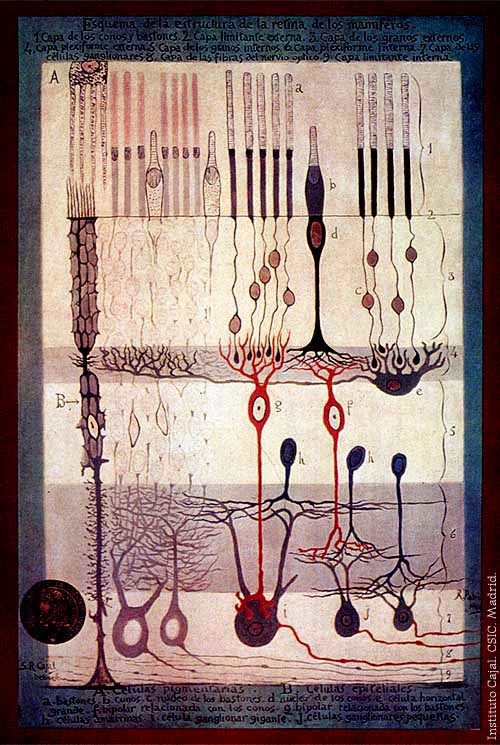Bennet
and Hacker [2003] have discussed at large the regrettable state of the
relationship between philosophy and neuroscience after Crick, Edelman and Zeki
expressed, in different terms, their reticence to grant philosophy any
competence in questions about conscience. While Edelman [2001,208] proposed the
grounding of epistemology in neuroscience, Zeki [Bennet and Hacker, 2003, 398]
went as far as to say that neuroscience will solve the problems of philosophy. Unfortunately,
neuroscience has not been able to fulfill such an ambitious program, but its
contributions to epistemology are certainly elucidating areas that for long
remained obscure and contradictory.
A
polemical situation like this is not new for the philosophy of science. The
epistemological discussions raised by the Vienna Circle and their extensions
and developments well through the XX century met similar objections, especially
among physicists. But the problem has even deeper roots, and goes back to the
distinction between philosophy and natural philosophy, or put in
epistemological terms, the distinction between a philosophy based on
metaphysical assumptions and which proceed exclusively by inference from those
assumptions (pretty much like axiomatic mathematics, or like theology, or
rational ethics), and an inductive philosophy based on experience and contrast
of hypothesis by experiment. The monolithic concept of philosophy and philosophical argumentations used by Edelman and
Zeki does not apply to philosophy more that it would apply to mathematics.
From
a constructive point of view, mathematics and the rest of our epistemological
thinking has its roots on biological grounds, a postulate that, although
expressed by Kronecker [Bishop, 2012,2], it took till the experimentations of Changeaux
[Changeaux and Connes, 1995] and Dehaene [2001] to be widely accepted, and only
among the different epistemological branches that spread from Brouwer’s
intuitionism. If we understand by biology
only neuroscience, Edelman’s thesis would be right, but it seems too narrow a
definition, and highly imprecise, for not only neuroscience, but biology itself
seems to be only understandable in a wider astrobiological conceptual frame.
Such a frame has to include also the anthropological system, the emergent
buffer introduced by human societies, so we find ourselves in a much more
complex situation than the one devised by naïve neuroscience.
No
doubt, neuroscience has very much to say in the psychological processes of the
ego formation and the question of consciousness (and Edelman’s theory of global
mappings is a proof of that), but its language lacks the expressive means to
address it in a critically manner, i.e., neuroscience has not the means to
investigate its own methodologies (ontoepistemological bases of the scientific
method, protocols of valuation, etc.), and therefore, to give a meaningful
theory of the processes of life. On the other hand, if neuroscience adopts
other languages (like the language of epistemology) to express their theories
and expand them in wider conceptual realms, such action would be philosophical,
and the parochial distinctions of Crick, Edelman and Zeki would no longer have
any meaning.
The
epistemological reductionist seems to ignore the semantical implications
of Tarski’s theorem, i.e., it ignores the notion of emergence of meaning. Theoretical terms do not have necesarilly the same meaning in theories which are sintactically reducible among them. To reduce one theory to another is to find a common symbolical representation for both of them, and that implies that both have the same capabilities of expression, and therefore that we are expressing basically the same thing in both theories, a realist ontology which ignores the historical dimension of our theories and which implies the belief in an underlying reality beyond human symbolization.
It
does not have to be called philosophy, let us call it constructive neurophilosophy or systems biology, or any other name, but the epistemological work
has to be done if we want to have meaningful argumentations. The process is
double: axiomatic critique (of the principles and of the methods) and
theoretical construction. The results and postulates of neuroscience are needed
at both levels.
References
Bennet,
M.R and Hacker, P.M.S. [2003]. Philosophical
Foundations of Neuroscience. Blackwell Publishing. Malden, (MA-USA), Oxford (G.B) and Victoria (AUS).
Bishop,
Errett. [2012] Foundations of
Constructive Analysis. Ishi Press International. New York an Tokio.
Changeaux,
J.P. and Connes, A. [1995] Conversations
on Mind, Matter and Mathematics. Princeton University Press.
Edelman,
Gerald M., and Tononi, Giulio. [2001]. Consciousness.
Penguin Books. London et alliae.

